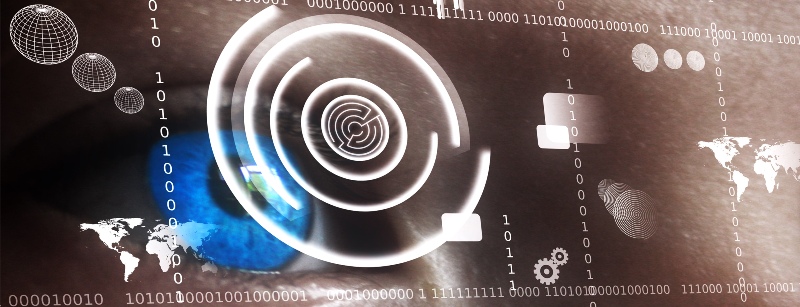Humans Are Visual Creatures
Here we gathered some interesting facts to emphasize why using visual aids in scientific communication is so important.
1. Half of the human brain is directly or indirectly devoted to processing visual information.
The eye’s retina, which contains 150 million light-sensitive rod and cone cells, is actually an outgrowth of the brain. In the brain itself, neurons devoted to visual processing number in the hundreds of millions and take up about 30 % of the cortex, as compared with 8 % for touch and just 3 % for hearing. Each of the two optic nerves, which carry signals from the retina to the brain, consists of a million fibers; each auditory nerve carries a mere 30,000. Primary visual cortex cooperates with other parts of the brain to process different components of visual information such as vertical or horizontal orientation, color, size, shape, movement, and distinctions between overlapping objects (source 1; source 2).
2. The brain can identify images seen for as little as 13 milliseconds.
The ability to identify images seen so briefly may help the brain as it decides where to focus the eyes, which dart from point to point in brief movements called fixations about three times per second. Deciding where to move the eyes can take 100 to 140 milliseconds, so very high-speed understanding must occur before that (source).
3. At least 65 % of people are “visual learners”.
This estimation comes from a research study on engineering students by Dr. Richard Felder in the 1980s, which later became a foundation for a standardized test called the Index of Learning Styles (ILS). The ILS sorts learners according to several different spectra, including visual-verbal. Subsequent studies have estimated that the proportion of visual learners to other learning styles is even higher, some as high as 80%, depending on the categories of learning styles used and the methodology of the study (source).
4. Humans have a remarkable ability to remember pictures.
People can remember more than 2000 pictures with at least 90 % accuracy in recognition tests over a period of several days, even with short presentation times during learning. This excellent memory for pictures consistently exceeds our ability to remember words. The reason why the picture memory is superior may be that pictures automatically engage multiple representations and associations with other knowledge about the world, which results in more elaborate encoding than occurs with words (source).
5. Presentations using visual aids were found to be 43 % more persuasive than unaided presentations.
Back in 1986, researchers from the University of Minnesota studied how presentations are improved by visual support. The study involved an attempt to persuade people to commit their time and money to attending seminars on time management. Presentations supported by a variety of visual support (use of color vs. black and white; use of plain textual visuals vs. those enhanced with “clip art” and graphs) were compared to a presentation with no visual support. Overall, the presentations using visual support were 43 % more persuasive. In particular, visual support has affected the perception of a presenter as being more concise, clearer, making better use of supporting data, more professional, more persuasive, and more interesting (source).
6. What our eyes see can influence what we hear, which is called the “McGurk Effect”.
To see the “McGurk Effect” in practice, check this video:
[social_warfare]

Tea Romih (PhD in Nanotoxicology, 2016) is the Seyens.com editor and advisor at Seyens Education Institute, responsible for communication between researchers and illustrators.



[forcedm|https://forcedm.com/]
January 14, 2020 (9:17 am)
An image better than a thousand words can convey concepts to the brain.
VRM Leads
September 23, 2020 (2:00 pm)
People can remember more than 2000 pictures with at least 90 % accuracy in recognition tests over a period of several days, even with short presentation times during learning. This excellent memory for pictures consistently exceeds our ability to remember words. The reason why the picture memory is superior may be that pictures automatically engage multiple representations and associations with other knowledge about the world, which results in more elaborate encoding than occurs with words. Inventory Growth for Vacation Rental Managers